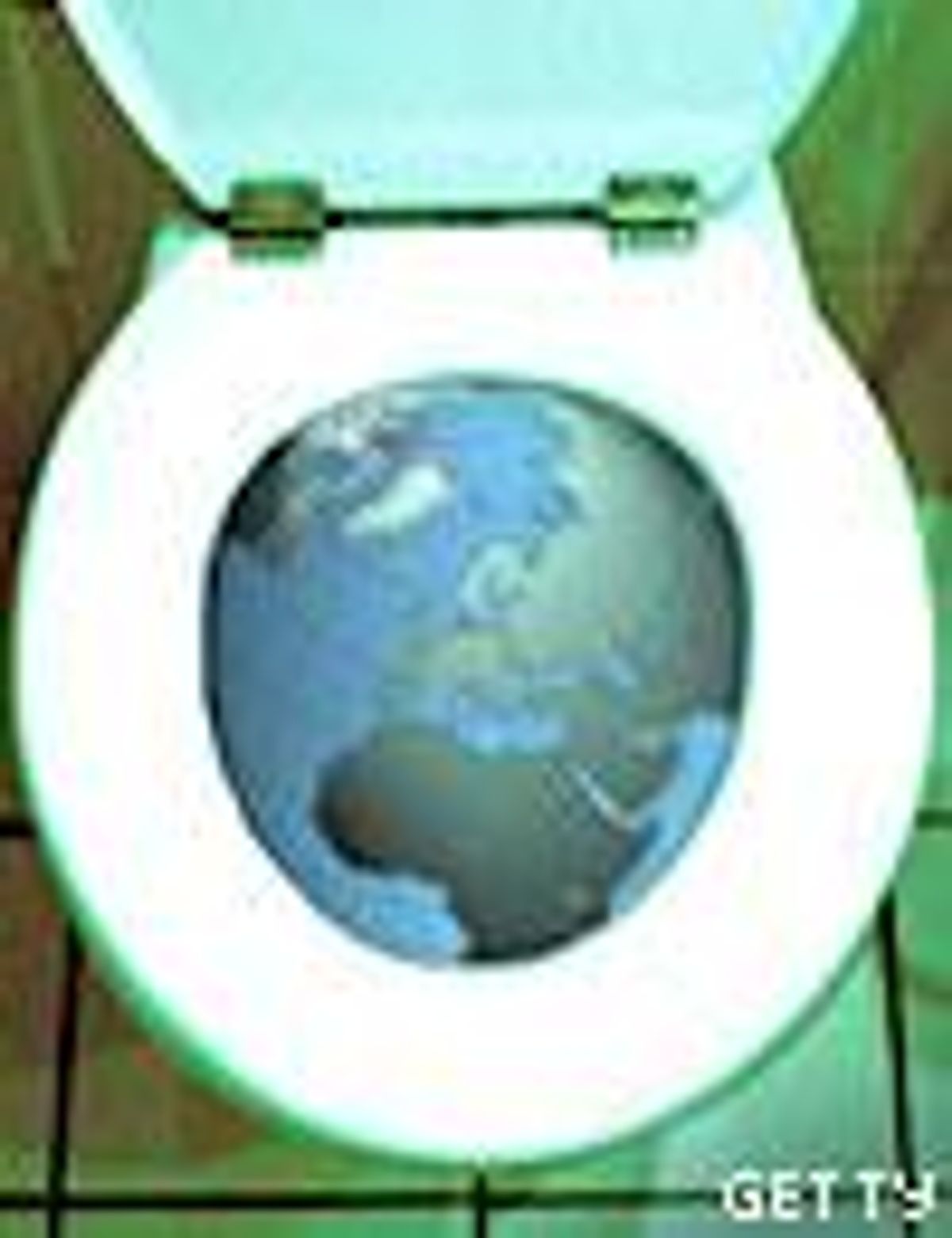
Why being trendy is the worst thing that could happen to the environmental movement.
April 09 2008 12:00 AM EST
November 17 2015 5:28 AM EST
By continuing to use our site, you agree to our Private Policy and Terms of Use.

Why being trendy is the worst thing that could happen to the environmental movement.
Inside a renovated movie theater near downtown Los Angeles, lamps assembled from thousands of discarded silkworm cocoons light up tables of recycled teak.
The FordBrady gallery--owned by former bicycle racers Willard Ford (Harrison's son) and John Brady--champions the green aesthetic. But, as environmentalists, Ford and Brady know that buying a recycled teak table is less responsible than keeping the table you've got (or picking up a used one). Building, marketing, and shipping furniture, no matter what it's made of, are energy- and resource-hogging activities.
Deep down, we know that really being green means buying less and making do, but we also know it's more fun to go shopping. Green products like hybrid vehicles and the latest refillable water bottles let us have it both ways--spending money while racking up "environmental cred." Forget Dumpster-diving--most of us would rather be spreegans than freegans.
Green has gone from a color to a movement to a style. The trouble is, styles don't last. And we can't let environmentalism become a fashion victim.
Some of us do a lot for the planet just by being gay: We bring the world fewer McMansions and fewer backyards than if we were straight. (No gay person has bought a riding mower--ever.) We also bring fewer babies. (I have to admit, having children was the best--and also the most environmentally destructive--thing I've ever done.) Add a high disposable income and exquisite sensitivity to trends, and gay consumers have done their share to make green products cool.
The problem with that is too many green products are designed to let us feel good without doing good. This spring Lincoln unveiled the MKT, a luxury sedan that nods in the direction of sustainability with--no kidding--carpet woven from banana fibers. Coke is turning surplus can tabs into messenger bags ($175) and broken bottles into earrings ($45), for sale in the Eco-Fashion section of the Coca-Cola online store. Apparently using biodegradable soap to do the dishes is only one form of green-washing.
Of course, there are some purchases (and purchasers) that could never seem green. Media mogul David Geffen is the co-owner of a yacht with 82 rooms. Picture a five-story building as long as 1 1/2 football fields. No amount of banana fiber carpet and silkworm-cocoon lamps can make that anything less than an environmental horror. Its name, Rising Sun, should be changed to Rising Oceans.
While Geffen may deserve credit for his candor, he could take a lesson from my boyfriend, the professor, who decided not to replace his Ford Taurus after it burst into flames on Christmas Eve. Since January, Chuck has commuted to work on a secondhand bicycle with saddlebags that allow him to carry books and groceries. Not only has he reduced his carbon footprint to the width of a skinny tire--he shops a lot less too.
"When you don't have a car, you think more about everything you buy," he says. "You pick up smaller quantities. And impulse purchases like large bottles of Diet Coke are out."
Less disciplined than Chuck, I would have taken a halfway measure, replacing the Taurus with a Toyota Prius. But even the Prius isn't perfect--its battery requires nickel from a Canadian mine said to be a serious polluter; and the nickel is shipped from Canada to Europe to China to Japan before making its way to U.S. showrooms.
Sure, 45 miles per gallon is better than 20. And buyers of hybrid cars argue that at least they're sending a message to manufacturers about the kind of cars Americans are looking for. But they're only sending that message if they give up their other vehicles. A Prius that shares a driveway with a Ford Expedition sends the message that buying "green" is just a new way of accessorizing.
Truth is, the worst polluters aren't cars or even yachts but buildings--which contribute more greenhouse gases than transportation and manufacturing combined. So it's no surprise that eco-fashion has reached the design and construction industries. There isn't an architecture magazine in North America that hasn't done a "green issue"--featuring products like bamboo cabinetry and insulation made from recycled blue jeans.
But there are countless competing definitions of green design. Some focus on cutting energy use, some on improving indoor air quality, and some on reducing the use of nonrenewable resources. Select one goal and the others may suffer. (If you make your building tighter to reduce heat loss, you'll also make the indoor air more toxic.) It's a dilemma, says Steven Lenard, a city planner and a volunteer for GreenHomeNYC. "Unfortunately, there's no way to weigh an extra ton of CO2 in the atmosphere against an extra part per million of formaldehyde in your house against an extra acre of rainforest cut down. You have to choose which issues are most important to you and make decisions accordingly."
But making those choices requires more data processing than most of us can manage. Which gives us a perfect excuse for doing nothing. As does our tendency to think short-term. Solar panels may pay for themselves in 20 years, but who wants to stay in the same house till 2028?
Some days, I share the view of British scientist and prognosticator James Lovelock, who believes the earth has passed the tipping point and, therefore, any steps we take are "almost certainly a waste of time and energy."
Other days, I'm not that glum. But if you are, you might as well go shopping. D